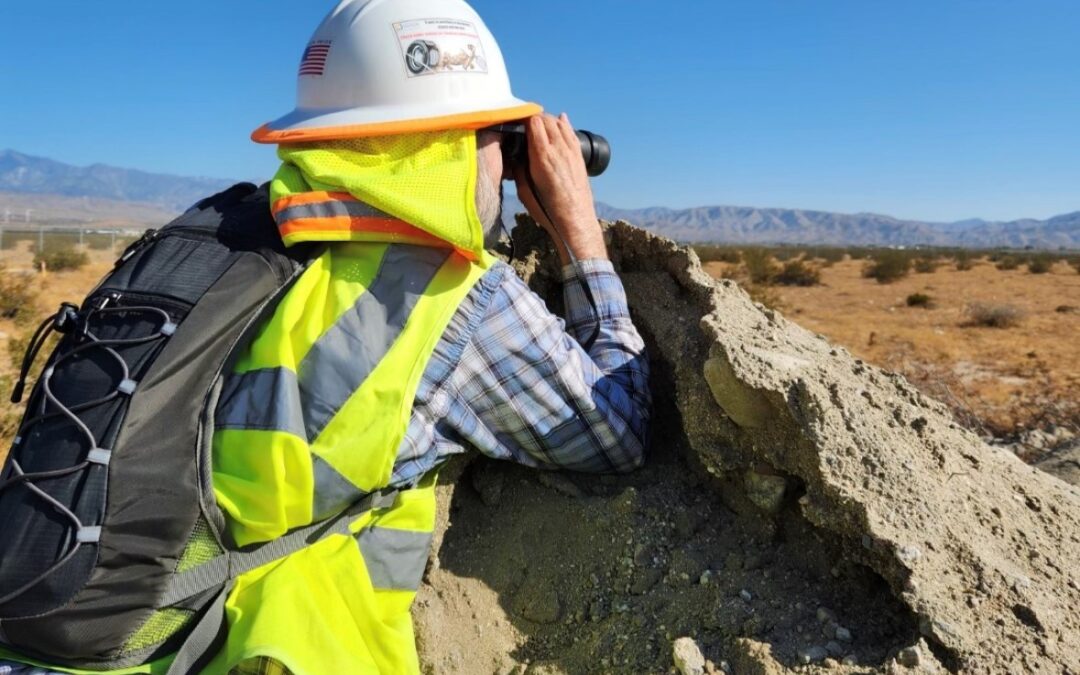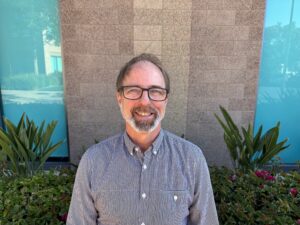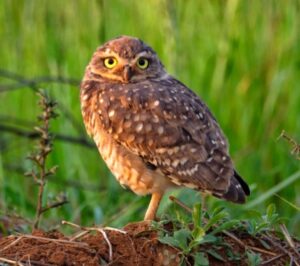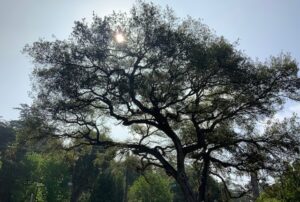Biologist and Arborist, Matthew Sutton, Provides Ecological Expertise
For nearly 30 years, UltraSystems has built its business and reputation on the foundation of professional expertise. Their extensive team of subject matter experts, or SMEs, across a variety of fields have been brought on and developed to deliver high quality results for their clients. As top environmental consultants, UltraSystems’ commitment to delivering expert knowledge ensures the success of their clients’ projects while also adhering to local, state and federal guidelines on urban development.
Every SME at UltraSystems brings vital insight to each and every job that they are on for their clients. In the Biological Resources group, Matthew Sutton is one such expert. With degrees in Environmental Science and Biology with an emphasis in Wildlife Conservation, Matthew has expertise in a wide range of matters regarding ecological restoration. And as a certified International Society of Arboriculture (ISA) Arborist, Matthew can provide additional knowledge specific to tree health and aesthetics, as well as the ecological benefit of specific tree species.
At UltraSystems, Matthew is responsible for assessing and communicating biological resources and their characteristics at a project site to the client. Most projects begin for him in the field where he assesses what resources need to be protected before or during a client’s project. Everything from rare plants, to protected wildlife, to jurisdictional waters can fall under Matthew’s prevue. In the field, Matthew may collect coordinates for mapping the canopy of a tree or a complex of burrowing owls. Some days you may find him knee deep in a stream marking the alignment of jurisdictional waters.
A day in the field requires a heightened level of observation and attention to detail. Sometimes biological resources are obvious, but many times they require looking for evidence of the resource. For instance, a feather in place of observing a bird or the tell-tale leaves of a rare plant shadowed by an overgrown invasive species. Matthew photo documents what he finds. Later he will use the photos in the reports that he prepares for the client. He relies on lists managed by the California Department of Fish and Wildlife (CDFW) and the US Fish and Wildlife Service (USFW) that indicate a plant or wildlife species’ status. Their status as a Threatened or Endangered Species, Species of Special Concern or Fully Protected Animal determines how Matthew will proceed and the recommendations he will make to the client.
Initial field assessments outline Matthew’s tasks going forward on that project. If an assessment has found the presence of a protected species, whether plants or wildlife, then some form of monitoring or mitigation is required under CEQA (California Environmental Quality Act). For example, as Matthew was performing a biological assessment in Desert Hot Springs, he found evidence of burrowing owls – a species whose status is considered of special concern by the State of California. Protecting the declining population of burrowing owls is required and may involve a variety of protective measures. First, the burrows must be observed for activity to determine if all of them are still being used and by how many owls. These observations are important because they will determine next steps. Sometimes the mitigation measure requires construction work at the site to be restricted around an active burrow or complex of burrows, especially if it is breeding season. In other instances, mitigation measures may involve the relocation of the owls through passive relocation, a process that involves the closing of some of the unused complex of burrows or even the supplying of artificial burrows. Mitigation and monitoring measures usually require Matthew to continue to do field assessments over a period of time to provide the best outcome possible for the owls while also respecting the goals of the client.
Matthew’s expertise is not limited to Burrowing Owls though. From February to August (typical breeding season for birds), Matthew is conducting nesting bird surveys for a wide variety of clients. Additionally, he evaluates jurisdictional waters throughout the year. In fact, on a recent project, Matthew had a client that wanted to build a pedestrian bridge over a stream. In this case, he worked with the engineers to ensure that the streambed, water quality, and aquatic life were considered and protected during the design and construction of the bridge.
As an arborist, Matthew is often called in on projects to evaluate the health of trees and the impact that a construction project may have on them. In California, for example, oak trees are protected by law, making it illegal to cut down, remove or damage an oak tree without a permit from the local government. In these cases, an arborist becomes instrumental in advising how to protect the tree(s).
This is exactly where Matthew found himself not too long ago when consulting on residential development project in Murrietta, California. The client wanted to preserve an old-growth heritage oak tree on the site, but the initial site plans included the construction of a retaining wall within the canopy of the tree. Building a structure like this would have negatively impacted the tree’s root system and by extension the tree’s overall health. Matthew shared that, “We were able to negotiate with the client to re-design their plans slightly to avoid encroachment of structures within the tree’s root zone, thus increasing the tree’s chance of success, and preserving an aesthetic gem for residents to enjoy for years to come.” This perfectly illustrates the nature of Matthew’s job as a biologist at UltraSystems. Every day he is working to advance a client’s project while also protecting a wide variety of plants and wildlife so that he, and others, can continue to enjoy them for years to come.
About UltraSystems
UltraSystems, founded in 1994, is a multi-disciplinary, full service environmental consulting and planning firm serving both the public and private sectors. The 27-year-old firm provides expertise in development planning; site selection and analysis; CEQA and NEPA compliance; technical studies, and environmental compliance during construction. UltraSystems Environmental is certified as a WBE, SBE, DBE and WOSB company and is headquartered in Irvine, California.






